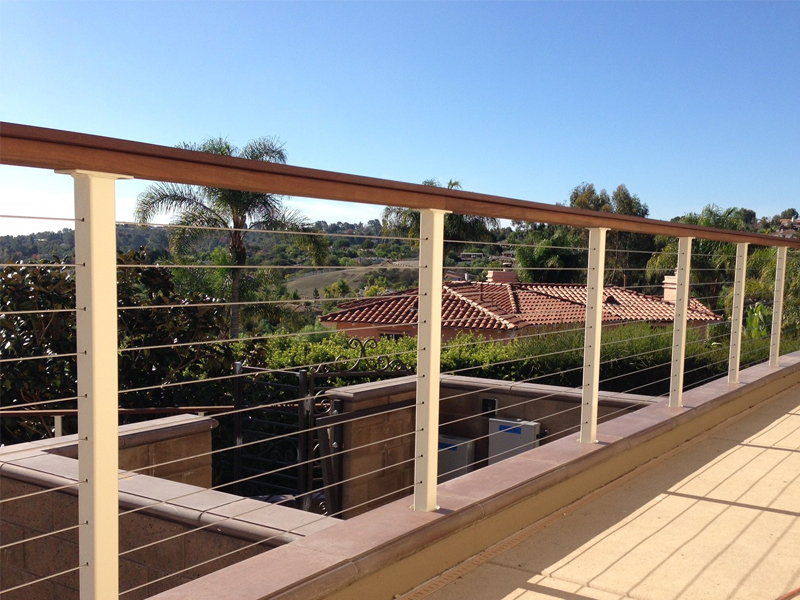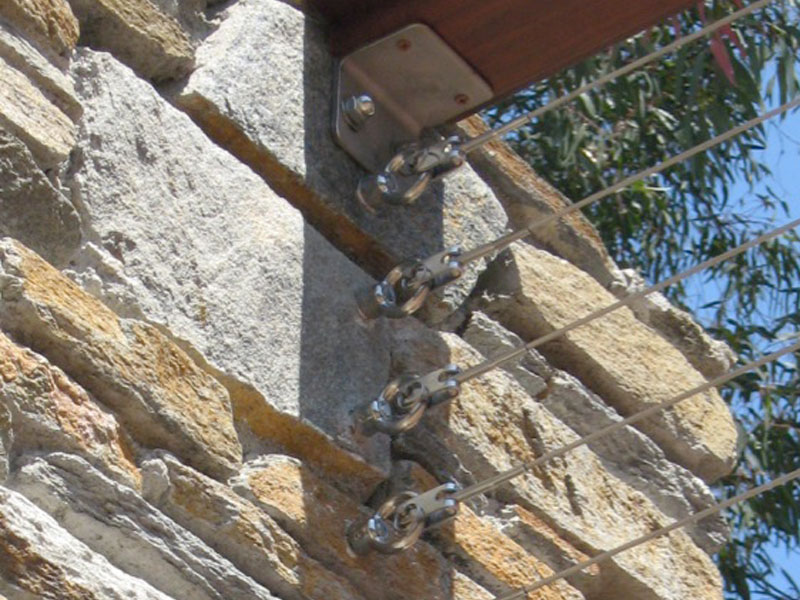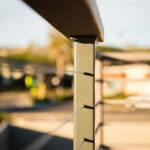The attachment of railing systems to masonry walls and patios requires different mounting methods than those used for wooden framing. Railing frames and the mounting hardware selected must take into consideration the type and thickness of substrate, as well as any veneer materials and their thicknesses. Stainless steel cable railings are an excellent choice for masonry applications due to the rigidity and versatility of these systems. Here are a few examples of common masonry surfaces encountered in residential and commercial railing applications:
- Pool Decks- reinforced concrete, often topped with stone overlays or natural stone veneers, tile, mosaic
- Masonry Walls- cinder block CMU, geo grid, keystone walls, poured concrete
- Patio Slabs- stamped and/or colored concrete, tile overlays, stone tiles, ceramic, natural stone
- Paver patios- often installed over concrete or sand bases
Grouted vs. Mechanically Connected Railings for Concrete Slabs
The best railings for concrete slabs will have a concrete cast footing, grouted, or direct mechanical connection to the slab itself. The photo below illustrates a solid CMU wall that was core drilled prior to post installation. The coring penetrated through the thickness of the decorative cap and deep into the CMU cells. The railing posts were then set with high strength grout. The contractor chose core drilling in this application however wedge anchors or epoxied rods would also have been a suitable choice. The main consideration for attachment is the length of the anchor and a proper amount of penetration into the actual concrete masonry units.

Cable railings utilizing steel post systems are well suited for masonry applications because of their strength and durability. When installing via the use of a mechanical connection like a wedge anchor, welded mounting plates provide a high strength connection compared to a mechanical plate to post connection. The welded connection results in tremendous loading ability. Some projects require a direct infill connection to a masonry column or wall. San Diego Cable Railings T316 stainless steel cable assemblies are capable of securing directly to masonry walls, rock, brick, or block (see photo below).
Cable railing systems are well suited for any type of masonry application and the finished results are extremely rigid frames with excellent cable tension. DIY cable assemblies are also available for masonry connections with no special tools required to install.

Rigid and Durable Railing Connections Will Pass Inspections
When it comes to strength and durability of railing materials, one would be hard pressed to find an example of a wooden or vinyl option that could compete with a steel and masonry combination. When connected to block walls or slabs, cable railing systems feel as solid as the wall itself. The result is minimal deflection during loading, amazing cable tension, and code compliance. On many different occasions , inspectors have told our preferred installers that the railings feel like a solid wall. We have achieved these results through a number of different mounting applications.
San Diego Cable Railings has designed and furnished hundreds of railing systems for customers with concrete and masonry mounting applications. Our engineered product line and team of fabricators and preferred installers have decades of experience utilizing these products in real field conditions and inspections. If you are interested in a railing system for your home or business, give us a call at 844-277-7327 or visit the quote request form to request information and pricing.




